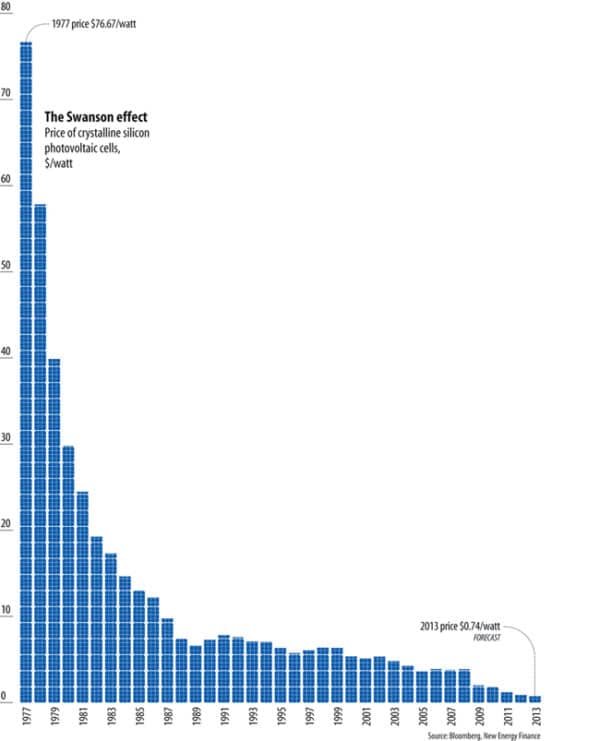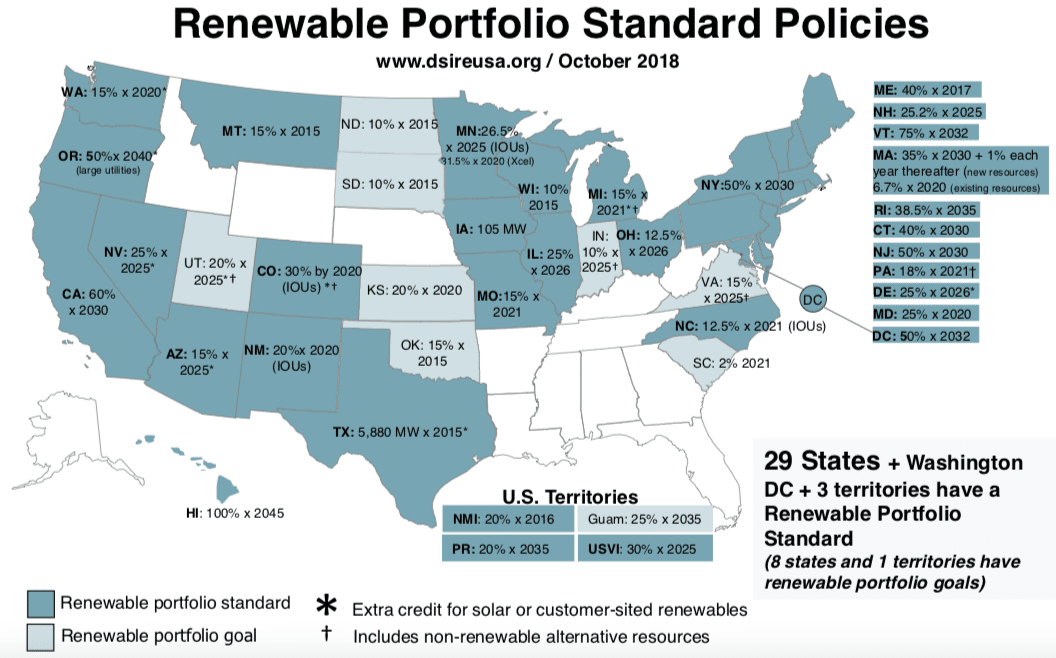The continuing fall in the cost of solar components has been the central driving factor in the growth of solar worldwide. As noted in a famous graph based on Bloomberg New Energy Finance data, the cost of solar cells fell 100-fold from 1977 through 2013, and along with reductions in other system costs this has made solar the cheapest source of new generation per unit of energy delivered in many parts of the United States, and the world.
 In fact, as early as 2011 technologist and writer Ramez Naam noted that the fall in solar costs has been akin to Moore’s Law, which is an observation of the exponential increase in densities of transistors in semiconductor devices.
In fact, as early as 2011 technologist and writer Ramez Naam noted that the fall in solar costs has been akin to Moore’s Law, which is an observation of the exponential increase in densities of transistors in semiconductor devices.
There are clearly many factors behind this decline in costs. Some have attributed research and development progress, others economies of scale, and still others improvements in efficiency. But how much of each? This question has remained elusive, until now.
In a recent edition of Energy Policy, a team of three researchers from Massachusetts Institute of Technology (MIT) and Santa Fe Institute have applied a conceptual framework to put numbers to the various factors to get at just how solar prices have declined.
As part of their model, the team broke down causes into “high-level mechanisms” and “low-level mechanisms”. In terms of the high-level mechanisms public and private R&D easily won out as the main driver. And though economies of scale are identified as a roughly equivalent driver in the period 2001-2012, throughout this period R&D is a larger factor overall. A third factor, “learning by doing”, is also identified.
However, the team also found that “market-stimulating policies” – specifically feed-in tariffs and renewable portfolio standards – were behind the economies of scale, private R&D and learning by doing, and thus represented over half of the overall drivers from 1980 to 2001 and around 75% from 2001 to 2012.
“Policies that stimulate market growth have played a key role in enabling PV’s cost reduction, through privately-funded R&D and scale economies, and to a lesser extent learning-by-doing,” reads the paper’s abstract.
Feed in tariffs have previously been identified in multiple studies as the largest driver of solar deployment globally, however the German model of feed-in tariffs never caught on in the United States, and the record of feed-in tariffs has been sharply criticized after retroactive policy changes in Spain, Czech Republic and other nations damaged investments and wrecked markets.
Instead of feed-in tariffs the United States has relied on other policies including renewable portfolio standards, with some version of a renewable energy mandate in 29 states and Washington D.C. And these have not lost steam, with California recently deciding to move to 100% zero-carbon electricity by 2045, and a new movement backed by 11 members of the U.S. Congress (and counting) calling for 100% renewable energy nationally by 2030.

In terms of low-level mechanisms, the paper identifies increased module efficiencies as the main factor, driving 25% of cost reductions.
This content is protected by copyright and may not be reused. If you want to cooperate with us and would like to reuse some of our content, please contact: editors@pv-magazine.com.









By submitting this form you agree to pv magazine using your data for the purposes of publishing your comment.
Your personal data will only be disclosed or otherwise transmitted to third parties for the purposes of spam filtering or if this is necessary for technical maintenance of the website. Any other transfer to third parties will not take place unless this is justified on the basis of applicable data protection regulations or if pv magazine is legally obliged to do so.
You may revoke this consent at any time with effect for the future, in which case your personal data will be deleted immediately. Otherwise, your data will be deleted if pv magazine has processed your request or the purpose of data storage is fulfilled.
Further information on data privacy can be found in our Data Protection Policy.